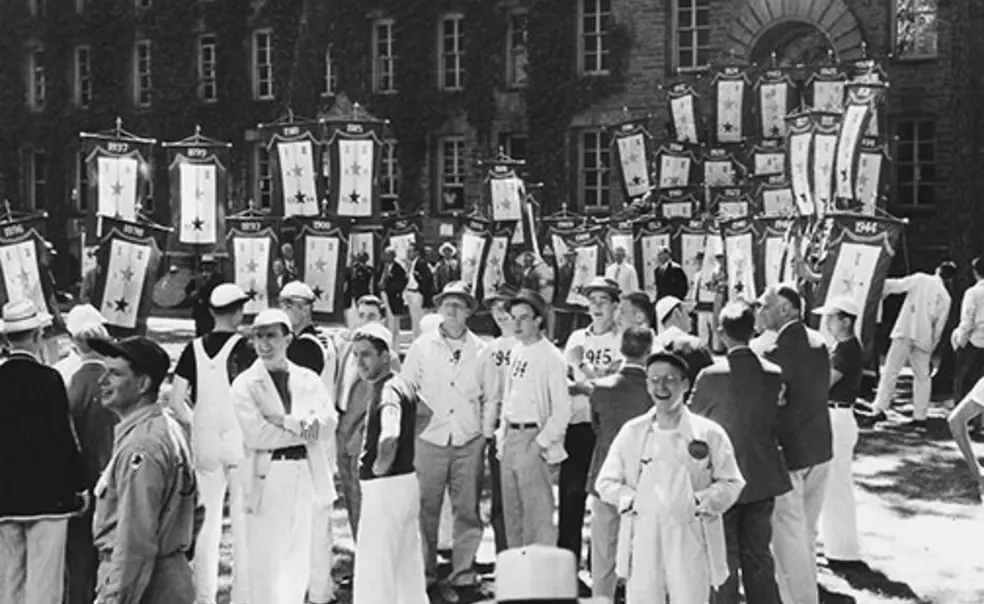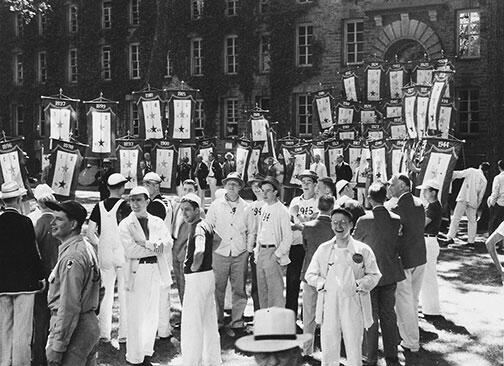In a moving display of pride and mourning, the “service flags” from every Princeton class going back to the 1890s were massed at the steps of Nassau Hall nine months after World War II ended. They were then paraded to the University Chapel for the Service of Remembrance, which has become an annual rite of Alumni Day.
Red-bordered service flags had stars and numbers indicating how many classmates had been in uniform or had died in the war. In all, they showed that 353 Princetonians gave their lives for their country.
Nearly 10,000 alumni and students had served. The first to die was Rogers Lamont ’20, killed with the British army at Dunkirk. The oldest victim of the war was Maj. Clinton Dickinson 1909, who suffered a stroke while working for the draft board in Washington. The youngest included four students from the Class of 1948.
Seventy years after the end of the war, we can hardly fathom the sacrifice involved. Imagine the deaths of 48 or 50 members of an undergraduate class today: That’s equivalent to the 4 percent loss experienced by the Class of 1940.
Three Reunions had been canceled in wartime. Now the 1946 Victory Reunion brought 7,300 Tigers to campus, twice as many as ever before. Nostalgic alumni had enjoyed “going back to Nassau Hall” since the centennial celebration of 1847, but this was the first big, modern Reunions of the kind we love today.
Spirits were festive despite the sobering toll that the war had taken. No wonder the Civil War-era bell of Nassau Hall had rung for 45 minutes celebrating German surrender May 7 — and an unparalleled three-and-a-half hours on V-J Day, Aug. 14.
Given postwar shortages, it wasn’t easy coming to the Victory Reunion, and the University could provide only a single blanket to alumni staying in the dorms. Yet everyone had a good time, including Charles C. Black 1878 — at 87, the oldest returning alumnus of all.













No responses yet